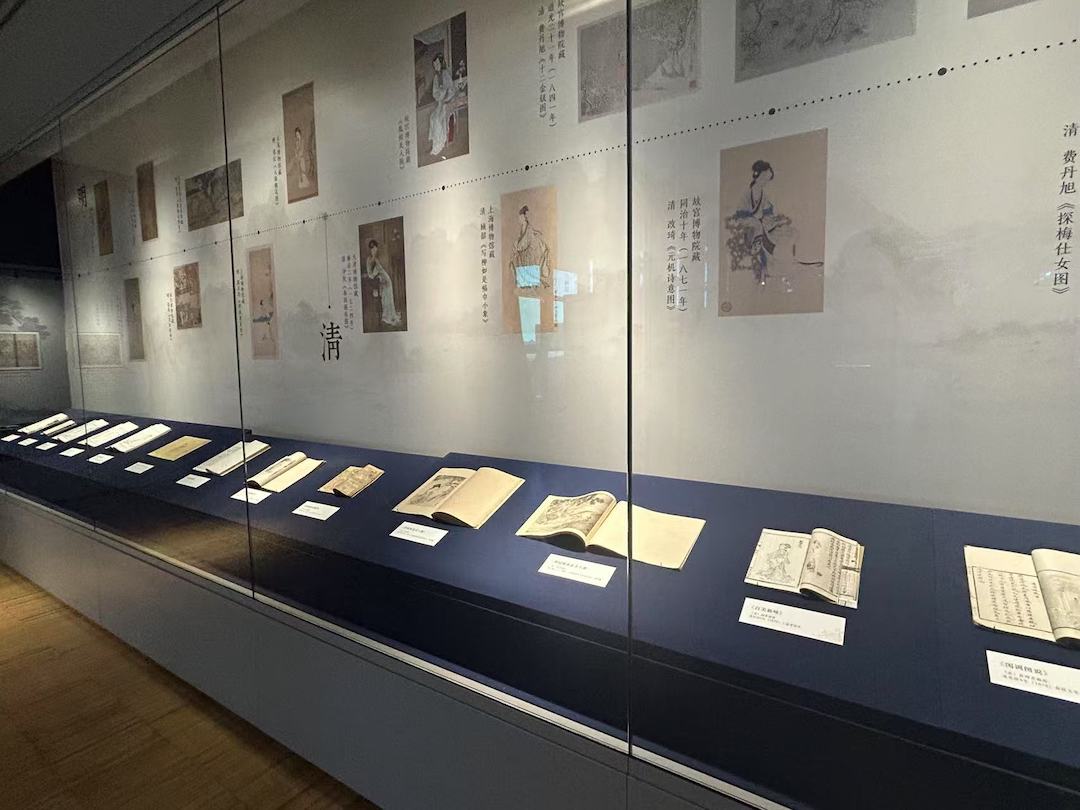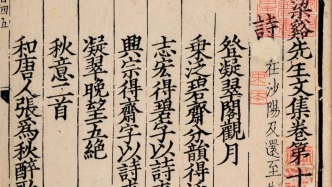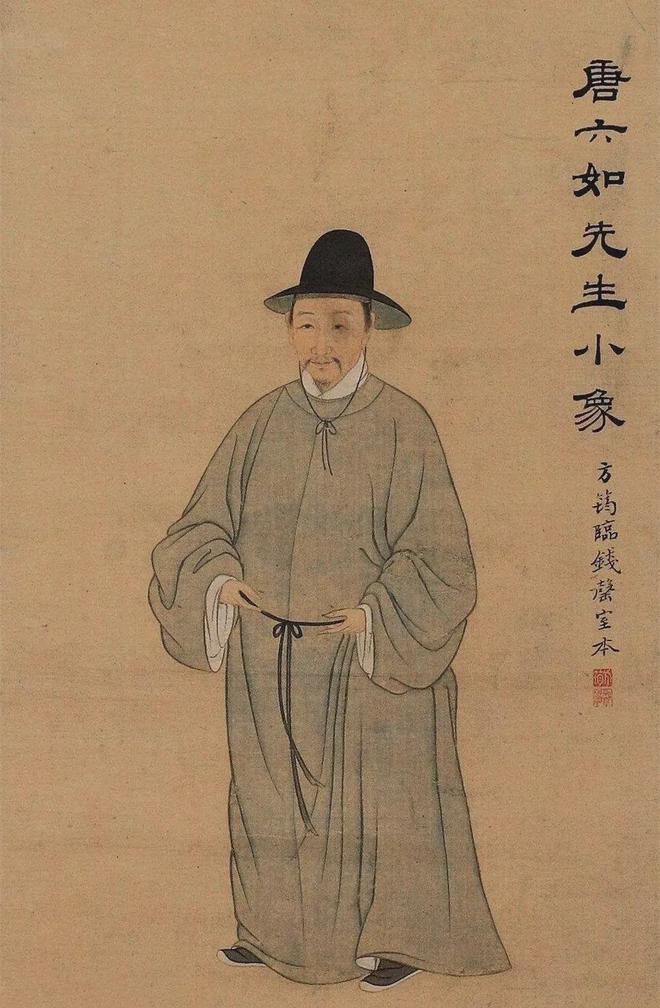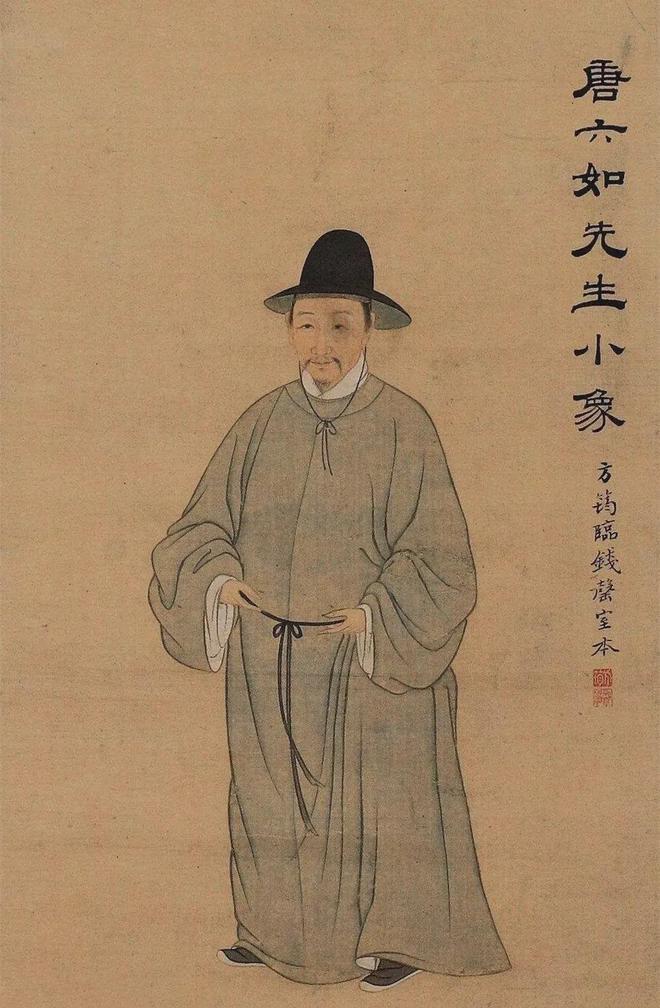
"Beauty Like Jade - Beautiful Images of Women in Historical Documents in the Shanghai Library" was recently exhibited at the Art and Literature Museum on the fifth floor of the East Building of the Shanghai Library. The exhibition is divided into three parts: "Beauty in Books", "Pearls from Overseas", and "Beautiful Images of the Golden Years". It carefully selects and integrates the images of women in ancient books from the Ming and Qing dynasties, old books from overseas, and New Year paintings in the Shanghai Library's collection, allowing the audience to feel the beauty of Chinese women in different times and spaces.
"Beauty in Books" displays the images of women in the museum's collection of ancient books. From the "Book of Songs", "Yuefu Poetry Collection", "Yutai Xinyong" and other ancient poetry anthologies from the pre-Qin and Han dynasties, which display the "beauty culture" in text reading, to the classic female images in the illustrations of Ming and Qing legendary novels such as "Romance of the West Chamber" and "Biographies of Women", the beauties in traditional Chinese literature either lean on the railing to contemplate in the artistic conception of poems, or stretch their talents and feelings in legendary stories.

Exhibition View
Literary texts of all dynasties have become the basis for the generation of female images, especially the developed commerce and handicrafts in the middle and late Ming Dynasty, which promoted the prosperity of book production and illustration painting. Famous artists such as Tang Yin, Qiu Ying, and Chen Hongshou stepped into the game and wrote illustrations for books. All kinds of social conditions and cultural customs were displayed one by one in the beauties they painted.

Ming Dynasty edition of Yutai Xinyong
"A graceful lady is the ideal match for a gentleman" "Hands as soft as catkins, skin as white as cream" "A charming smile and eyes full of longing" - the words in the Book of Songs have left us with the most beautiful imaginations of ancient women; "A lotus-picking girl beside the Ruoye River, she smiles and talks with people across the lotus flowers. The sun shines on her new makeup, making it bright under the water; the wind blows her fragrant sleeves up in the air" is the description of the lotus-picking girl in Li Bai's "Song of Picking Lotuses".

The Collected Works of Li Bai, printed by Hubei Official Book Office in the first year of the Republic of China

A Grand View of Yuan Opera, a photocopy of the 1910 edition of Shanghai Jinwentang Bookstore
In the ancient times when there was no photography technology, the only way to record the scene was to draw. The traditional novels and drama stories about talented scholars and beautiful women, such as "The Palace of Eternal Life", "The Peony Pavilion", "The Peach Blossom Fan", and "Annotated Swallow Letter", are well-known to everyone. The illustrations of the novels depicting the heroines such as Yang Guifei, Du Liniang, and Li Xiangjun allow a group of simple and dignified beauties to move from the imagination of words to the concreteness of pictures.

The Palace of Eternal Life (Qing Dynasty) written by Hong Sheng, printed by the Nuanhongshi of the Liu family in Guichi in the eighth year of the Republic of China

The Peony Pavilion (Ming Dynasty) by Tang Xianzu, Tongwen Bookstore Lithographed Edition, 12th Year of Guangxu Period, Qing Dynasty
Among them, Li Xiangjun, the heroine of Peach Blossom Fan, is one of the "Eight Beauties of Qinhuai" in the Ming Dynasty. In terms of studying the image of the "Eight Beauties of Qinhuai", "Illustrated Poems of the Eight Beauties of Qinhuai" engraved by Ye Yanlan in the late Qing Dynasty can be regarded as an important historical material. In this book, Ye Yanlan made the most beautiful record of the eight beauties in the form of one picture and one text, and the images he drew are both vivid and vivid.

Peach Blossom Fan (Qing Dynasty) written by Kong Shangren, printed in the Nuanhongshi edition of the Guichi Liu family in the third year of the Republic of China

"The Eight Beauties of Qinhuai" (Qing Dynasty) compiled by Ye Yanlan, printed by Guangzhou Yuehua Academy in the 18th year of Guangxu in the Qing Dynasty
Ma Xianglan, one of the "Eight Beauties of Qinhuai" in the late Ming Dynasty, was good at poetry and painting, especially orchids. Next to "The Eight Beauties of Qinhuai" is a small portrait of Ma Xianglan from "Ma Xianglan's Letter to Wang Baigu". The author of this picture is the painter, calligrapher and collector Wu Hufan, but the image was not created by Wu Hufan. He copied the image of Ma Xianglan from "The Eight Beauties of Qinhuai".

"Handwritten Letter from Ma Xianglan to Wang Baigu" (copy)
Why did Wu Hufan paint the portrait of Ma Xianglan? Leng Sihui from the Historical Documents Center of Shanghai Library told The Paper that Ma Xianglan, as the leader of the Eight Beauties of Qinhuai, was good at poetry and painting, and was a frequent visitor to scholars and was particularly friendly with Wang Baigu. Ma Xianglan met Wang Baigu at a banquet, and the two got along well, often writing poems and exchanging letters. Wu Hufan collected the letters between Ma Xianglan and Wang Baigu, and made them into a scroll, at the beginning of which he painted this small portrait of Ma Xianglan.

Nanling Wushuang Pu (illustrated by Jin Shi in the Qing Dynasty) was printed by Tongwenshu Bureau in the 12th year of Guangxu in the Qing Dynasty.
The "Nanling Wushuangpu" from the Qing Dynasty on display is an atlas that has had a huge impact on later generations. Many images of beauties on ceramics are excerpted from the "Nanling Wushuangpu". "Nanling Wushuangpu is actually an atlas of ancient celebrity paintings. It not only includes images of women, but also male historical figures from all dynasties, such as Sima Qian."

Yuan Liaofan's Interpretation of the Romance of the West Chamber
The exhibition also displays various books related to The West Chamber, such as Mr. Li Zhuowu's Criticism of the North West Chamber, The Picture of the Thousand Years of Beauty, The North West Chamber, and Mr. Yuan Liaofan's Interpretation of The West Chamber, most of which are photocopied copies. "It is said that Qiu Ying painted The West Chamber. Qiu Ying is good at painting beauties, especially courtyard beauties. He would paint the courtyard very long with beauties interspersed in it. His New West Chamber is in this unique style," said Leng Sihui.

The Thousand Years of Beauty (left) (replica) North West Wing (right) (replica)
"The Jade Hairpin" also tells the story of a talented scholar and a beautiful woman. The illustrations of "Mr. Li Zhuowu Criticizing The Jade Hairpin" shown here have a unique style. The characters in the painting are small, and what comes to the face is the landscape scene in which the characters are placed, just like a small landscape painting. The layout is beautiful and full of poetic sentiment, which was a major feature of this book at the time.

Li Zhuowu's Criticism of the Jade Hairpin (Ming Dynasty) written by Gao Lian, printed in the Qingli Pavilion of Xindu (here is the exhibition board)

Mr. Li Zhuowu's criticism of Hong Fu Ji (copy) written by Zhang Fengyi (Ming Dynasty). Ming Dynasty (1368-1644) Hulin Rongyutang engraved edition
"Overseas Pearls" displays the illustrated encyclopedias of Chinese themes in old Western books from the 17th to 19th centuries and the images of ancient Chinese women in European versions of Chinese novels. Westerners who came to China either collected illustrated publications in China and the customs and figures drawn by Guangzhou export painters, or repainted and sketched according to the inherent artistic paradigm of Western figure painting, and brought the images of Chinese ladies with different identity characteristics to the other side of the ocean, providing an image basis for Western readers to understand and imagine the lives of Chinese women at that time.
The literary and visual images of Chinese ladies were also translated and published by Westerners, leaving a deep impression on Western readers. After reading The Story of the Good Wife translated by Thomas Percy, Archbishop of the Church of England, Goethe was impressed by the hero and heroine's adherence to propriety and morality in the book, and he associated this kind of legendary and romantic Chinese classical novels about talented scholars and beautiful women with his concept of "world literature".

"Yu Jiaoli" (copy) French version published in Paris in 1826

Designs for Chinese Buildings, Furniture, Clothes, and Objects (copy) First edition in French, London, 1757
"Beautiful Shadows of the Year" presents readers with female images that are more lifelike and full of folk customs in folk art such as New Year pictures.
The women in New Year pictures are mostly drawn from opera stories since the Ming and Qing Dynasties and daily life scenes in the late Qing Dynasty. Cui Yingying in "Romance of the West Chamber" and Chen Cui'e in "Pearl Tower" are the embodiment of truth, goodness and beauty with their talent, beauty, virtue and affection; women in daily life are combined with auspicious prayers, playing the role of Guanyin, the goddess of childbearing, or the festive and lively New Year's beauties. In the reproduction and depiction year after year, they are like folk goddesses of beauty, moving from specific stories and life to the more abstract and spiritual world of folk aesthetics. As an indispensable part of folk culture from north to south, with their elegance and power, they embody people's beautiful vision of life inheritance and seeking good fortune.

New Year paintings at the exhibition


